Best Ways to Use Pears in Cooking
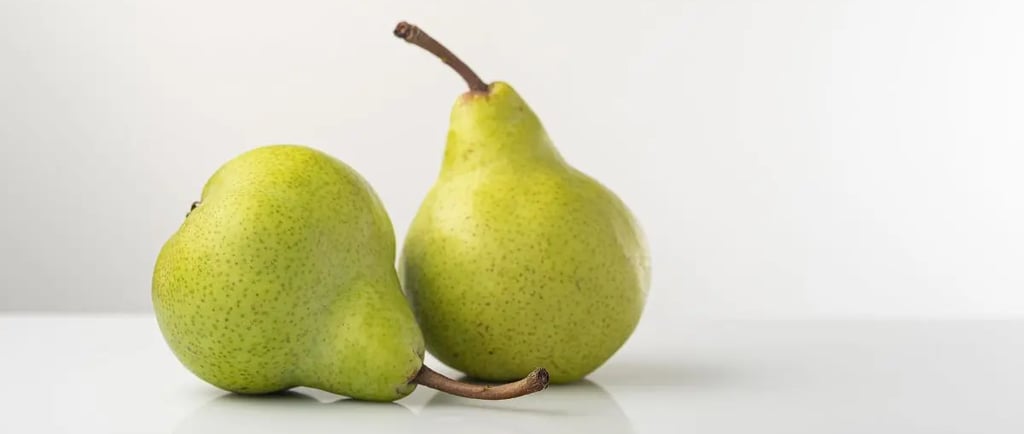

Why Pears Deserve a Spot in Your Kitchen
Who doesn’t love a good pear? Sweet, juicy, and light in texture, they’re the perfect fruit for any dish. But surprisingly, pears rank 12th on the list of most consumed fruits. Take a look here to see the full list.
When it comes to the best ways to use pears in cooking, they’re more versatile than you might think. Whether it’s a sweet dessert, savory dish, or even a drink, pears can do it all.
Pears in Cooking: More Than Just a Sweet Treat
In this post, I’ll show you the many ways pears can enhance your cooking, from their health benefits to the different varieties worth stocking up on. Let’s get started!
Additional Nutrients in Pears
Pears are packed with several other beneficial nutrients. Here are some additional nutrients found in pears:
Vitamin A: Pears contain small amounts of Vitamin A, which helps with eye health and immune function.
Folate: This B-vitamin is essential for cell growth and metabolism, especially beneficial during pregnancy.
Copper: Pears provide copper, which plays a key role in forming red blood cells and maintaining a healthy immune system.
Magnesium: Supports muscle and nerve function, as well as bone health.
Calcium: Important for bone health, though in smaller amounts compared to other fruits like oranges.
Iron: While not a high source, pears do contain some iron, which is essential for red blood cell production.
Antioxidants: Pears contain antioxidants like flavonoids and phenolic acids, which help reduce inflammation and support overall health.
The Health Benefits of Pears
Pears are a great source of fiber, vitamins, and antioxidants. They support digestive health, boost immunity, and help reduce inflammation. Let’s take a look at the health benefits, and here is a table that compares how they measure up to the number one fruit, bananas.
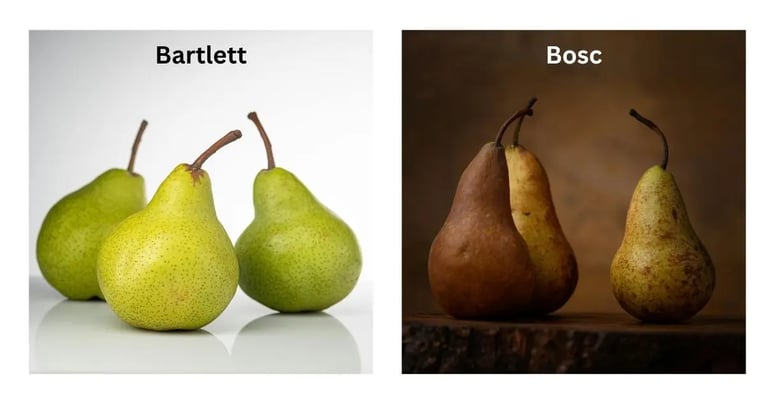

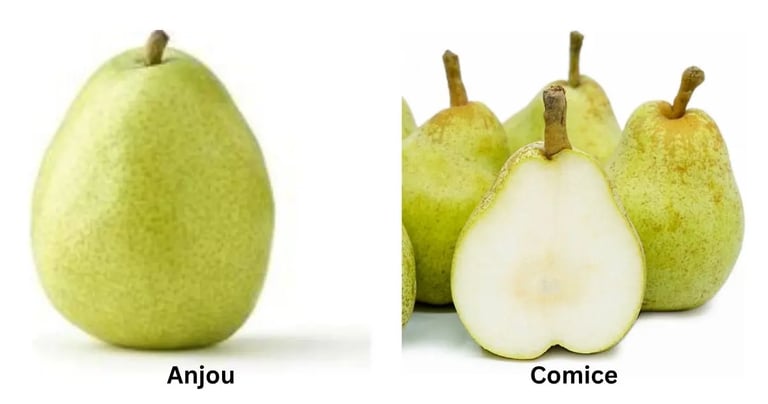

Harvesting Pears
Pears are typically harvested in late summer to early fall, depending on the variety. While many pears are picked in the fall, thanks to modern storage techniques, we can enjoy fresh pears all year round in retail stores. These storage methods, like controlled atmosphere (CA) storage, help preserve the fruit’s freshness and quality long after the harvest season.
Ripe vs. Unripe Pears
When it comes to ripeness, it’s important to know the difference between ripe and unripe pears. Pears generally ripen off the tree, so you’ll want to let them sit at room temperature for a few days if they’re still firm. To tell if a pear is ripe, gently press near the stem. If it yields slightly, it’s ready to eat. Unripe pears are often firmer and need more time to soften, but don’t let them sit too long or they may over-ripen.
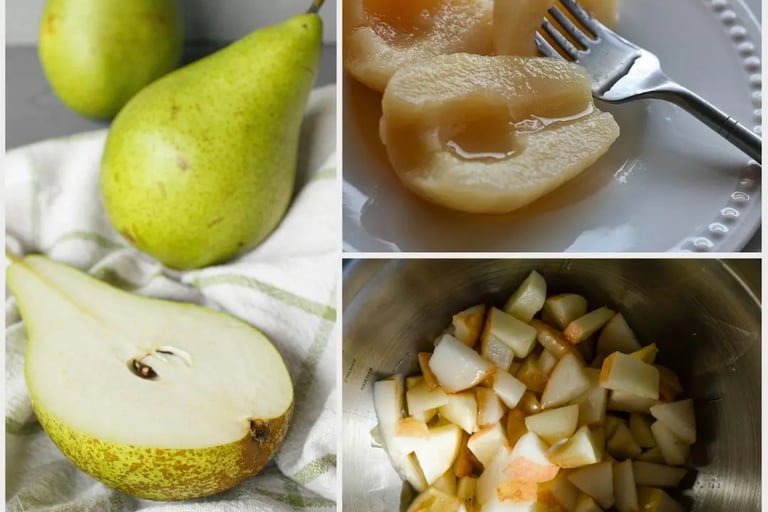

Canned vs. Fresh Pears: Which Is Best for Your Recipe?
When it comes to cooking with pears, you have the option of using either canned or fresh pears. Each has its own set of benefits, so knowing when to use each can make all the difference.
Fresh Pears:
Pros: Fresh pears offer the best texture and flavor, especially for raw uses like in salads or for snacking. They can be easily peeled or sliced and incorporated into baked goods or desserts. Fresh pears also allow you to control ripeness, which is important when you want a certain texture in cooking (e.g., firmer pears for roasting).
Cons: They require more time to prepare and may not be available year-round, depending on the variety and season.
Canned Pears:
Pros: Canned pears are convenient, readily available, and come in consistent sizes. They're often pre-peeled and sliced, saving time in recipes like sauces, pies, or compotes. They also have a longer shelf life.
Cons: Canned pears can be a bit mushy compared to fresh, and they tend to be sweeter due to added syrup, which can affect the flavor profile of your dish. They also lack the crispness that fresh pears bring to salads and raw preparations.
When to Use Which:
Fresh Pears: Best for raw applications like salads, fresh desserts, or when you want a firmer texture in baked goods.
Canned Pears: Great for recipes where texture isn't as critical, like in sauces, compotes, or canned pie fillings.
My Two Cents: I’ve been known to eat pears out of the can. Although fresh is always best in flavor, I still find canned pears enjoyable. They’re quick and easy, and sometimes that’s exactly what you need!
Best Ways to Use Pears in Cooking
Pears are incredibly versatile and can be used in both sweet and savory dishes. Whether you’re baking, roasting, or adding them to a salad, pears bring a touch of sweetness and a variety of textures to your meals.
Baking: Pears are fantastic in pies, tarts, or cakes. Their natural sweetness and moisture make them ideal for baked goods, though you may want to peel them depending on the texture you’re aiming for in your final dish.
Roasting and Grilling: Roasted or grilled pears are a great addition to savory dishes or as a side. The heat caramelizes the sugars in the pears, creating a rich, sweet flavor that pairs wonderfully with meats like pork or chicken. For roasted dishes, peeling is optional, but leaving the skin on adds fiber and helps hold the pear's shape.
Poaching: Poached pears are an elegant choice for desserts or as a topping for yogurt or oatmeal. Gently cooking them in a spiced syrup or wine makes them tender and flavorful. Peeling them is recommended for a smoother texture, though it’s a personal choice depending on the dish.
Salads: Fresh pear slices add crunch and sweetness to salads. Pair them with arugula, blue cheese, or walnuts for a balance of flavors. If you’re concerned about the pear’s skin being too tough or chewy, peel it before adding to the salad.
Savory Dishes: Pears can shine in savory recipes, too. Roasted pears in a balsamic glaze or used in a stuffing can complement meats and other robust flavors. In these dishes, peeling is often optional, depending on your preference for texture.
Peel or Not to Peel?
When it comes to cooking with pears, whether or not to peel them depends on the recipe. In general, pears don’t have a bitter skin, though some varieties may have a slightly tougher texture, especially when not fully ripe. If you prefer a smoother texture or are using a variety with thicker skin, like red pears, peeling is a great option.
For baked goods, poached pears, or desserts where a soft, uniform texture is desired, peeling is the way to go. However, leaving the skin on adds fiber and can enhance the rustic appeal in dishes like roasted or grilled pears. The skin is mild and provides a pleasant texture in most cases, so it’s truly up to personal preference!
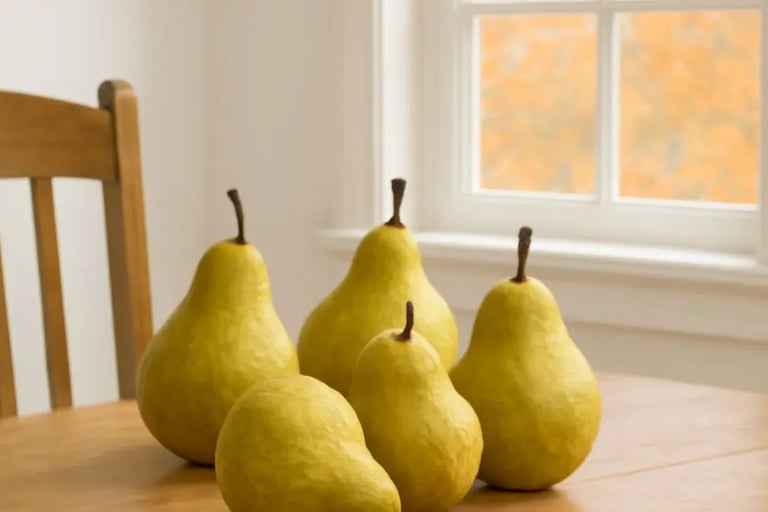

Start Cooking with Pears Today!
There’s nothing like a juicy, ripe pear to munch on for a snack, but let’s not stop there. You can bake with them, poach (or simmer), turn them into a dessert, or even add a touch of sweetness to your savory recipes. So go on, start experimenting with pears in your kitchen today... How about this easy to make Apple Pear Butter. Remember you can use all pears if you like. You won’t regret it, trust me!
Ready to Start Cooking with Pears?
Now that you know all about the health benefits and different ways to use pears, it’s time to get creative in the kitchen! Whether you’re looking to try a new recipe or find the perfect pear for your next dish, start experimenting and enjoy the delicious results. Don’t forget to share your pear creations with us and tag us on social media with your favorite pear recipes.


